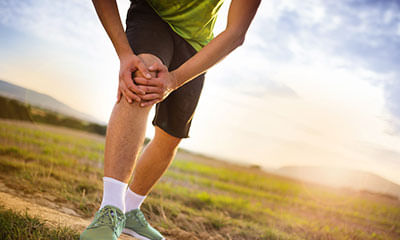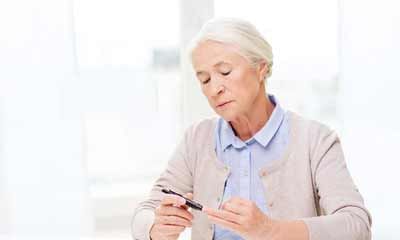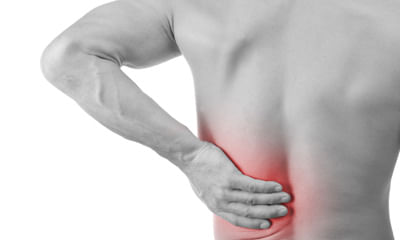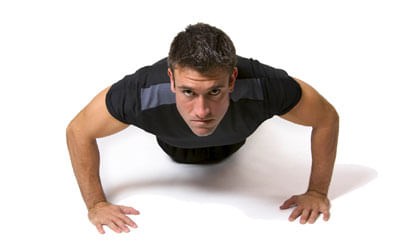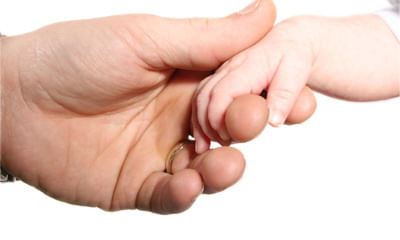Types Of Ear Operations
Hi. How strong is generally reconstructed acl after 8 months of surgery, yesterday 1 of the kids aged 7-8 years old fell ...
Ask Free Question
After acl reconstruction surgery, it typically takes several months for the graft used to replace the torn ligament to heal and integrate with surrounding tissues. During this time, the new acl graft is gradually remodeling and strengthening, but it may not reach its maximum strength until about 12 to 18 months post-surgery. The strength of the reconstructed acl can also depend on factors such as the type of graft used (e.g. Autograft or allograft), surgical technique, rehabilitation protocol, and individual factors such as age, overall health, and adherence to post-operative rehabilitation. In general, after 8 months of surgery, the reconstructed acl may have regained a significant amount of strength and stability, but it may still be vulnerable to sudden forces or impacts, especially during activities involving twisting, pivoting, or direct blows to the knee. If you experienced a fall or trauma to your operated leg, it's essential to monitor for any new or worsening symptoms such as pain, swelling, instability, or decreased range of motion. If you have any concerns or if you experience significant pain or instability, I would recommend consulting with your orthopedic surgeon or healthcare provider for a thorough evaluation to assess the integrity of the reconstructed acl and determine if any further treatment or precautions are necessary. They can provide personalized guidance based on your specific situation and help ensure the best possible outcome for your recovery.
I am 30 years old .i recently delivered to a baby girl. After delivery I am facing memory loss. I don't remember daily a ...
Ask Free Question
You need to have special type of mri scan of the brain called mrv and consult a neurologist/ psychiatrist for further help. Good luck.
Doctor my mother has osteoarthritis is it curable its in initial stage is it curable and may I know how long it takes to ...
Ask Free Question
Symptoms of arthritis symptoms of osteoarthritis may include joint pain and progressive stiffness that develops gradually. Symptoms of may include painful swelling, inflammation, and stiffness in the fingers, arms, legs, and wrists occurring in the same joints on both sides of the body, especially upon waking up in the morning. Knee arthritis can be painful and debilitating. For osteoarthritis (oa) of the knee, self-care early on can often help significantly. It is important to stretch and strengthen the surrounding leg muscles to provide more support and reduce stresses around the joint. The following best bet exercises will help you get started on your path to feeling stronger, more flexible and more active. Remember: exercise should not be painful – if you experience pain, discontinue and consult with your physician. Advice: 1.must take adequate rest 2.apply hot water with mild heat with cotton towel 3.avoid cross leg sitting and long time standing 4. Put the small size chair under the ankle during sitting in the chair for leg elevation 5.do the exercise given below 2 times per day 1.quadriceps setting exercise helps to strengthen the quadriceps muscle (the big muscle on the front of the thigh), an important stabilizer of the knee. Lie on your back with the leg you want to exercise straight. Place a small rolled towel underneath the knee. Slowly tighten the muscle on top of the thigh (quadriceps) and push the back of the knee down into the rolled towel. Hold contraction for 5 seconds and then slowly release, resting 5 seconds between each contraction. Perform 3 sets of 10 repetitions, 1 time daily. 2.straight leg raise also helps to strengthen the quadriceps muscle. Lie on your back with the leg you want to exercise straight. The other knee should be bent to support your lower back. Tighten the muscle on the top of your thigh and lift to the level of your other knee. Slowly lower. Perform 3 sets of 10 repetitions, 1 time daily. Knee pain •patellar tendinitis: •risk factor •a combination of factors may contribute to the development of patellar tendinitis, including: •physical activity. •running and jumping are most commonly associated with patellar tendinitis. Sudden increases in how hard or how often you engage in the activity also add stress to the tendon, as can changing your running shoes. •tight leg muscles. Tight thigh muscles (quadriceps) and hamstrings, which run up the back of your thighs, can increase strain on your patellar tendon. •muscular imbalance. •if some muscles in your legs are much stronger than others, the stronger muscles could pull harder on your patellar tendon. This uneven pull could cause tendinitis. •chronic illness. •some illnesses disrupt blood flow to the knee, which weakens the tendon. Examples include kidney failure, autoimmune diseases such as lupus or rheumatoid arthritis and metabolic diseases such as diabetes. •complications •if you try to work through your pain, ignoring your body's warning signs, you could cause increasingly larger tears in the patellar tendon. Knee pain and reduced function can persist if you don't tend to the problem, and you may progress to the more serious patellar tendinopathy. •prevention •to reduce your risk of developing patellar tendinitis, take these steps: •don't play through pain. As soon as you notice exercise-related knee pain, ice the area and rest. Until your knee is pain-free, avoid activities that put stress on your patellar tendon. •strengthen your muscles. Strong thigh muscles are better able to handle the stresses that can cause patellar tendinitis. Eccentric exercises, which involve lowering your leg very slowly after extending your knee, are particularly helpful. •improve your technique. To be sure you're using your body correctly, consider taking lessons or getting professional instructions when starting a new sport or using exercise equipment. •therapy •a variety of physical therapy techniques can help reduce the symptoms associated with patellar tendinitis, including: •patellar tendon strap. A strap that applies pressure to your patellar tendon can help to distribute force away from the tendon and direct it through the strap instead. This may help relieve pain. •iontophoresis. This therapy involves spreading a corticosteroid medicine on your skin and then using a device that delivers a low electrical charge to push the medication through your skin. •platelet-rich plasma injection. This type of injection has been tried in some people with chronic patellar tendon problems. Studies are ongoing. It is hoped the injections might promote new tissue formation and help heal tendon damage. •probably your stamina would've gone down due to over use of the joints and the metabolic activity is more due to running. You need to consume good protein diet so that your body will act as a reservoir. It will help you to fight against rather than affecting one particular area of your body for eg. Knee joint. For knee ligament pain or inflammation you need to keep ice which will help you to prevent the inflammation progressing further. •patellofemoral pain syndrome •usually fully relieved with simple measures or physical therapy. It may recur, however, if you do not make adjustments to your training routine or activity level. It is essential to maintain appropriate conditioning of the muscles around the knee, particularly the quadriceps and the hamstrings. •there are additional steps that you can take to prevent recurrence of patellofemoral •they include: •wearing shoes appropriate to your activities •warming up thoroughly before physical activity •incorporating stretching and flexibility exercises for the quadriceps and hamstrings into your warm-up routine, and stretching after physical activity •increasing training gradually •reducing any activity that has hurt your knees in the past •maintaining a healthy body weight to avoid overstressing your knees •joints, ie. In the upper limbs if the pain is present in the fingers/wrist and in the lower limbs it the pain is present in the toes/ ankle, then we shall definitely say it is rheumatic arthritis. •if your proximal joints (ie. Shoulder, hip & knee has pain) then you can pour hot (warm) water in that area to reduce the inflammation. If you have pain in the distal joints ie. Wrist, fingers, ankle, toes then you can wear either elbow brace or wrist brace which will help you to feel warm and very protective. And also immerse the distal joints in the hot water tub which will help you to reduce the pain. •knee pain during driving or watching movie. •it might due to lack of movements in the knee while the joints are immobilized during driving and while watching movies. It is important that you need to have movements in and around the knee so that the blood flow will not be disturbed. •knee ligament laxity•if you have problem in your legs then it might be due to ligament laxity where your legs would become very weak due to the old ligament injury and that should be treated immediately. •wear knee cap so that you will feel firm while walking or climbing stairs.•this is a general strain and for this you can follow these measures: one keep a pillow right under the knee while sleeping, next is you can keep ice in the painful area for about 5--10 minutes, if pain still persists you can stretch your body by twisting the waist on both sides how we used to do in the school drill similarly you can try! one time you can do hot water fermentation that would help to reduce the muscle strain. •legs becoming numb and also pain is there when the patient walks for 10-15 minutes?•it looks like you are anaemic. If you feel that the legs are becoming numb then keep your legs warm which is important, probably you can wear mcr chappals inside the house/ socks inside the house. Put a door mat when ever you sit so that you will feel comfortable. Also pour warm water in the legs which would help you to get better circulation. •knee pain. If you are overweight, losing weight will also help to reduce pressure on your knee. Knee pain this is a general knee pain and for this you can follow these measures: one keep a pillow right under the knee while sleeping, next is you can keep ice in the painful area for about 5--10 minutes, it looks like you are is important to check that. Anaemia always leads to the symptoms of being tired and also having body pain though there may not be any pathological reasons for knee pain. With knee exercises you will definitely feel better and muscles must be strengthened .•don't play through pain. As soon as you notice exercise-related knee pain, ice the area and rest. Until your knee is pain-free, avoid activities that put stress on your patellar tendon. •strengthen your muscles. Strong thigh muscles are better able to handle the stresses that can cause patellar tendinitis. Eccentric exercises, which involve lowering your leg very slowly after extending your knee, are particularly helpful. •improve your technique. To be sure you're using your body correctly, consider taking lessons or getting professional instructions when starting a new sport or using exercise equipment. •therapy •a variety of physical therapy techniques can help reduce the symptoms associated with patellar tendinitis, includingback pain it looks like you are anaemic. If you have back pain after you sit for long hours then it is due to your haemoglobin levels as it is important to check that. Anaemia always leads to the symptoms of being tired and also having back / leg pain though there may not be any pathological reasons for back pain. It looks like you are anaemic. And also you have to check with your vitamin and calcium, if the bones are weak then automatically the pain gets triggered more as there is less severity of the painbe strengthened 1.resisted terminal knee extension: make a loop with a piece of elastic tubing by tying a knot in both ends. Close the knot in a door at knee height. Step into the loop with your injured leg so the tubing is around the back of your knee. Lift the other foot off the ground and hold onto a chair for balance, if needed. Bend the knee with tubing about 45 degrees. Slowly straighten your leg, keeping your thigh muscle tight as you do this. Repeat 15 times. Do 2 sets of 15. If you need an easier way to do this, stand on both legs for better support while you do the exercise. 2•standing calf stretch: stand facing a wall with your hands on the wall at about eye level. Keep as arthritis is very common that you get generally bilaterally. Ice therapy would definitely help to reduce the inflammation. We also advise you to use knee cap which would help to prevent the knee from damaging further and also to maintain the quadriceps muscle tone •stretching exercises. Regular, steady stretching exercises can reduce muscle spasm and help lengthen the muscle-tendon unit. Don't bounce during your stretch. 3•strengthening exercises. Weak thigh muscles contribute to the strain on your patellar tendon. Exercises that involve lowering your leg very slowly after extending it can be particularly helpful, as can exercises that strengthen all of the leg muscles in combination, such as a leg press.•this is a general knee pain and for this you can follow these measures: one keep a pillow right under the knee while sleeping, next is you can keep ice in the painful area for about 5--10 minutes, it looks like you are is important to check that. Anaemia always leads to the symptoms of being tired and also having body pain though there may not be any pathological reasons for knee pain. With knee exercises you will definitely feel better and muscles must be strengthened.
My father is 68 years old, recently he is diagnosed with hernia and hydrocele. When further investigation was done, it's ...
Ask Free Question
You can. If post void urine is high than better to get operated simultaneously turp for prostate and hernioplasty at same sitting g after proper cardiac evaluation.
I had acl reconstruction plus complex lateral meniscus repair surgery on 22nd may, when can I start with partial weight ...
Ask Free Question
Meniscus injury a torn meniscus can result from any activity that causes you to forcefully twist or rotate your knee, such as aggressive pivoting or sudden. What are 3 signs of a meniscus injury? Swelling or stiffness. Pain, especially when twisting or rotating your knee. Difficulty straightening your knee fully. Feeling as though your knee is locked in place when you try to move it. Typically, mild meniscus tears heal within two to three weeks. What is a meniscal injury? A meniscus tear is an injury to a part of your knee called the meniscus and is a common injury. The menisci are two crescent-shaped pads of thick, rubbery shock-absorbing cartilage in your knee joint. They lie between your thigh bone (femur) and your shin bone (tibia). In the case of meniscus tears, some people think the injury will heal over time on its own. But the truth is that there are different types of meniscus tears — and some tears won't heal without treatment. If your tear is on the outer one-third of the meniscus, it may heal on its own or be repaired surgically. If your doctor has told you that you don't need surgery to repair your torn meniscus, you may be given the green light to walk. However, you'll want to be very careful about movements that might worsen the tear or cause you pain. Avoid squatting and pivoting, which are likely to place too much pressure on the knee. To speed the recovery, you can: 1.Rest the knee. 2.Ice your knee to reduce pain and swelling. 3.Compress your knee. 4.Elevate your knee with a pillow under your heel when you're sitting or lying down. 5.Take anti-inflammatory medications. 6.Use stretching and strengthening exercises to help reduce stress to your knee. Will a knee brace help a torn meniscus? Yes. Although knee braces do not heal or treat your meniscus tear directly, they can provide extra support and stability for your knee while your meniscus injury heals. A good brace will protect your knee and take the pressure off your meniscus, allowing it to rest. Your doctor may recommend the rice regimen—rest, ice, compression, and elevation—to treat a meniscus tear. Resting your knee can help relieve your symptoms. Your doctor may suggest using a cane for a few weeks to keep weight off your knee and to stay away from physical activity that may have contributed to the injury. Steps to heal a torn meniscus naturally: rest: it's crucial to rest your knee after injury. You should not participate in activities where you could cause additional strain. Ice: apply ice to your knee for 15 minutes at four-hour intervals.
Hi, my mom had an nerve rupture in brain (sah) in feb first week, we got admitted to hospital and they did dsa and didn' ...
Ask Free Question
I'm sorry to hear about your mother's health condition. A blister aneurysm, also known as a dissecting aneurysm, is a rare type of aneurysm that occurs when a tear develops in the wall of an artery, causing blood to accumulate in the surrounding tissue. This type of aneurysm can be very dangerous and may require urgent medical attention. Flow-diverting stents are a relatively new type of treatment for aneurysms. They work by redirecting blood flow away from the aneurysm and allowing the artery to heal over time. The procedure involves placing a small metal mesh tube (stent) across the aneurysm, which helps to redirect blood flow away from the aneurysm, allowing it to heal over time. As with any medical procedure, there are risks associated with flow-diverting stent placement, including bleeding, infection, and stroke. However, these risks are generally low, and most patients recover without any major complications. After the operation, your mother may need to stay in the hospital for a few days to ensure that there are no complications. She may also need to take medications to prevent blood clots and to manage pain. It is important to follow the doctor's instructions regarding recovery and post-operative care to ensure the best possible outcome. It is difficult to predict the chances of any abnormalities occurring after the operation, as this will depend on many factors, including the location and severity of the aneurysm and the overall health of your mother. However, flow-diverting stents have been shown to be effective in treating blister aneurysms and reducing the risk of future complications. It is important to discuss any concerns you have with your mother's healthcare provider, who can provide more specific information about her condition and treatment options. They can also provide guidance on what to expect before, during, and after the procedure. Take care.
My father is 73 years old. His 15 days back ultrasound report showed grade 1 fatty liver. He is having symptoms like 1. ...
Ask Free Question
Give him a diet with ample amount of vegetables. Include whole grain cereals in diet. Encourage him to be physically active as per his age. It will take 6-8 weeks for fatty liver to resolve.
Hello doctors I want to discuss my father in law's case history with all of you that you can suggest me better. My fathe ...
Ask Free Question
Hello friend as per the condition of your father in law, the severity of the disease is there. You need proper guidance and proper care with weight management, diet management, introduction of naturopathy techniques and a proper treatment as per the ayurved toxicology. The condition is severely bad, but still there are the possibilities to cure. Sach type of conditions need proper counselling to build mental strength and wheel power. Please contact nearby ayurved toxicology expert or you can also consult me in private.
Hi doctor I had my pilonidal cyst removed with a wide excision surgery on june 16th. Removed stitches on 28th. I still c ...
Ask Free Question
Post operative you happen to get such complains. Anyways it should have healed by now. U should maintain local hygiene and try to eat more. Eat more of soft diet.
Ve been trying to conceive for months now, decided to do a sperm count test and it came out as low as 6x10 ml. I consult ...
Ask Free Question
U have pain in testicles then go for surgery. Surgery do after conceive. Is better otherwise it's problem in pregnancy.

